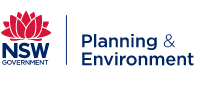
Urban environments are exposed to multiple, compounding and cascading natural hazard risks that are being complicated by changes arising from climate change. Increasing our understanding of these risks and vulnerabilities is an important enabler for actioning urban resilience.
This project will help us better understand how to prepare urban environments and those who live there to build resilience against compounding natural hazards. The research seeks to understand under what conditions and how optimal investments can be made to advance disaster resilience in major urban areas in Australia.
The purpose of this project is to develop a strong evidence base to understand the complex interactions between communities, the built environment and natural hazard risks – to inform resilience.
This project has three main objectives:
-
To increase understanding within the emergency management sector of:
-
multidimensional, compounding and cascading disaster impacts arising from natural hazard events for communities located in major urban areas in Australia
-
the ways in which these impacts may change over time under the influence of climate change, rapid urbanisation and other factors to influence urban resilience.
-
-
To develop guidance for local and state governments, emergency services and community organisations to conceptually map vulnerabilities and resilience within urban systems at local scales; and demonstrate its application with a proof of concept case study.
-
To develop process principles and standards for use by local and state governments, emergency services and community organisations to effectively prioritise and influence urban resilience investment at local, state and federal levels; and monitor and evaluate the outcomes of investment decisions.
This project will lead to greater understanding within the emergency management sector of multidimensional, cascading, and compounding disaster impacts, vulnerabilities and resilience in major urban areas in Australia – including who is most at risk, how and why, and the ways in which these risk and impacts may change over time under the influence of climate change and other factors including rapid urbanisation and technological change.
It will support local and state governments, emergency services and community organisations to conceptually map vulnerabilities and resilience within complex urban systems at relevant scales.
It will also lead to more effective decision making for risk reduction and urban resilience through, for example, urban planning, building standards, local program design and delivery, as well as increased capability to monitor and evaluate the outcome of those investment decisions.
| Date | Type | Title |
|---|---|---|
| 19 June 2025 | Presentation | Annette Kroen - Natural Hazards Research Forum 2025 presentation |











